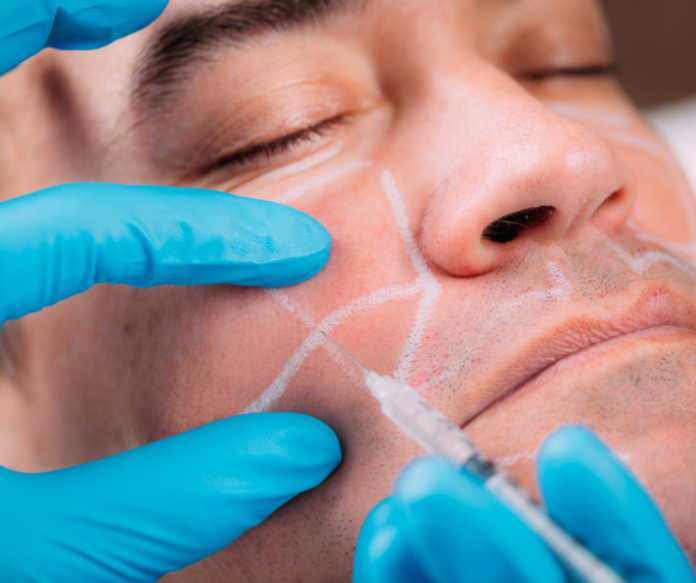
Addressing Bruising from Dermal Filler Injections: A Comprehensive Guide
Introduction to Medspa Services and Dermal Fillers
Medspa services have become increasingly popular in recent years, offering a wide range of non-surgical cosmetic treatments to help individuals achieve their desired appearance. One such treatment is the use of dermal fillers, which are injectable substances used to fill in wrinkles, add volume to the face, and improve overall skin texture. While dermal fillers can provide excellent results, some individuals may experience bruising following the procedure. In this article, we will address common questions and concerns about bruising from dermal filler injections and provide specific answers and solutions to help you better understand and manage this side effect.
What Causes Bruising from Dermal Filler Injections?
Bruising is a common side effect of dermal filler injections and occurs when blood vessels beneath the skin are damaged during the injection process. This damage can cause blood to leak into the surrounding tissues, resulting in the appearance of a bruise. Several factors can contribute to the likelihood of bruising, including:
1. The injection technique: The skill and experience of the injector play a significant role in the likelihood of bruising. A skilled injector will be able to minimize the risk of damaging blood vessels during the procedure.
2. The type of filler used: Some dermal fillers are more prone to causing bruising than others. For example, fillers with a higher viscosity may require more pressure during injection, increasing the risk of bruising.
3. The treatment area: Certain areas of the face, such as the lips and under-eye area, have a higher concentration of blood vessels and are more prone to bruising.
4. Individual factors: Some individuals may be more prone to bruising due to factors such as age, skin type, and the use of certain medications or supplements.
How Can I Prevent Bruising from Dermal Filler Injections?
While it may not be possible to completely eliminate the risk of bruising, there are several steps you can take to minimize the likelihood of experiencing this side effect:
1. Choose a skilled injector: Selecting an experienced and qualified medical professional to perform your dermal filler injections is crucial in minimizing the risk of bruising. Be sure to research your injector’s credentials and ask for before-and-after photos of their previous work.
2. Avoid blood-thinning medications and supplements: Certain medications and supplements, such as aspirin, ibuprofen, and vitamin E, can increase the risk of bruising by thinning the blood. Consult with your healthcare provider before stopping any medications, but consider avoiding these substances for at least a week before your dermal filler appointment.
3. Apply a cold compress: Applying a cold compress to the treatment area immediately before and after the procedure can help constrict blood vessels and reduce the risk of bruising.
4. Follow pre- and post-treatment instructions: Your injector will provide you with specific instructions to follow before and after your dermal filler appointment. Adhering to these guidelines can help minimize the risk of bruising and other side effects.
How Can I Treat Bruising from Dermal Filler Injections?
If you do experience bruising following your dermal filler injections, there are several steps you can take to help reduce the appearance of the bruise and promote faster healing:
1. Apply a cold compress: As mentioned earlier, applying a cold compress to the affected area can help constrict blood vessels and reduce the appearance of bruising. Apply the compress for 10-15 minutes at a time, several times a day, for the first 48 hours following the procedure.
2. Elevate the affected area: Keeping the treated area elevated, particularly during sleep, can help reduce swelling and promote faster healing.
3. Use over-the-counter remedies: Topical creams and gels containing arnica or bromelain can help reduce inflammation and promote faster healing of bruises. These products can be found at most drugstores and should be applied according to the manufacturer’s instructions.
4. Take oral supplements: Some individuals find that taking oral supplements, such as vitamin C, vitamin K, or quercetin, can help promote faster healing of bruises. Consult with your healthcare provider before starting any new supplements.
5. Be patient: Most bruises from dermal filler injections will resolve on their own within 1-2 weeks. Avoid picking at or massaging the bruised area, as this can prolong the healing process.
When Should I Seek Medical Attention for Bruising from Dermal Filler Injections?
While most bruising from dermal filler injections is mild and will resolve on its own, there are some instances in which you should seek medical attention:
1. Severe or worsening bruising: If your bruising is severe, continues to worsen, or does not begin to improve within a few days, consult with your injector or healthcare provider.
2. Signs of infection: If you notice any signs of infection, such as increased redness, warmth, or pus at the injection site, seek medical attention immediately.
3. Difficulty breathing or swallowing: In rare cases, dermal filler injections can cause swelling that affects the airway or throat. If you experience difficulty breathing or swallowing following your procedure, seek emergency medical attention.
Conclusion: How to address bruising from dermal filler injections?
Bruising is a common side effect of dermal filler injections, but with proper care and attention, it can be minimized and managed effectively. By choosing a skilled injector, following pre- and post-treatment instructions, and taking steps to prevent and treat bruising, you can enjoy the benefits of dermal fillers with minimal discomfort. If you have any concerns about bruising or other side effects following your dermal filler injections, be sure to consult with your healthcare provider or injector for guidance and support.



